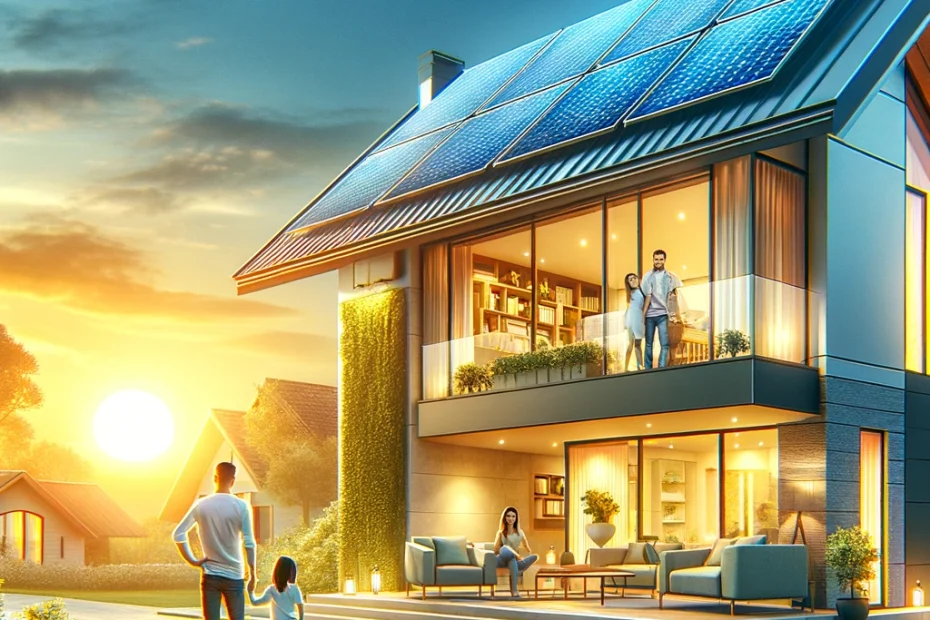Unlock the Power of the Sun: 7 Breakthrough Solar Panel Technologies Every Homeowner Must Know
In an era where sustainability and energy efficiency are paramount, the quest for renewable energy sources has never been more critical. Solar energy, with its boundless potential and environmental benefits, stands at the forefront of this quest. For homeowners looking to reduce their carbon footprint and energy bills, solar panel innovations offer a promising solution. This article delves into the top solar panel technologies that are reshaping the way we harness the sun’s power, making solar energy more accessible, efficient, and cost-effective than ever before.
The Evolution of Solar Energy: A Brighter Future
The journey of solar energy from a niche, costly investment to a mainstream power source is a testament to human ingenuity and perseverance. Over the years, advancements in solar technology have made solar panels more efficient, durable, and versatile, paving the way for a cleaner, more sustainable energy future. These innovations have not only improved the performance of solar panels but also expanded their applications, making solar energy a viable option for a wide range of settings, from urban rooftops to remote locations.
Perovskite Solar Cells: A Game-Changer in Efficiency
Among the most exciting developments in solar technology are perovskite solar cells. These next-generation solar cells promise to revolutionize the solar industry with their high efficiency and lower production costs. Unlike traditional silicon solar cells, perovskites can be produced using simpler processes, potentially leading to cheaper and more accessible solar panels. Their ability to absorb light across a broader spectrum also contributes to their superior efficiency, making them a key player in the future of solar energy.
Transparent Solar Panels: Blending Form and Function
Transparent solar panels represent a leap towards integrating solar technology into our daily lives seamlessly. These innovative panels can be incorporated into windows, skylights, and even smartphone screens, generating electricity while allowing light to pass through. This technology not only expands the potential surfaces for solar energy generation but also opens up new avenues for architectural design, combining aesthetics with environmental sustainability.
Solar Skin Technology: Customization Meets Efficiency
Solar skin technology is another breakthrough that is making solar panels more attractive and customizable. This technology allows homeowners to match their solar panels with the aesthetic of their roofs without compromising on efficiency. Solar skins use selective light filtration to display custom designs on the surface of the panels, making them blend seamlessly with the building’s exterior while still producing energy.
Bifacial Solar Panels: Double the Power
Bifacial solar panels, capable of capturing sunlight from both sides, offer a significant boost in energy production. By harnessing the albedo effect, where light is reflected off the ground or surrounding surfaces, these panels can generate more electricity than traditional single-faced panels. This innovation is particularly beneficial in areas with high reflectivity, such as snow-covered landscapes or bright rooftops, maximizing the solar energy captured throughout the day.
Integrated Energy Storage: Solar Power Day and Night
The integration of energy storage solutions with solar panels is addressing one of the primary challenges of solar energy: its intermittency. By storing excess energy produced during the day, homeowners can use solar power even when the sun is not shining, ensuring a constant and reliable energy supply. Advanced battery technologies, such as lithium-ion and flow batteries, are making solar energy storage more efficient and affordable, enhancing the self-sufficiency of solar-powered homes.
AI and IoT Integration: Smart Solar Management
Artificial intelligence (AI) and the Internet of Things (IoT) are transforming solar energy management, making systems smarter and more efficient. These technologies enable real-time monitoring and optimization of energy production and consumption, ensuring maximum efficiency. Smart solar systems can predict energy needs, adjust production based on weather forecasts, and even sell excess energy back to the grid, optimizing energy use and cost savings for homeowners.
Solar Panel Innovations: Lighting the Way Forward
The relentless innovation in solar technology is not only making solar energy more efficient and accessible but also inspiring a new generation of energy-conscious homeowners. As we continue to explore and embrace these advancements, the dream of a sustainable, solar-powered future becomes increasingly attainable. Harnessing the sun’s power has never been more exciting, with each innovation bringing us closer to a world where clean, renewable energy is the norm.
FAQs
What makes perovskite solar cells different from traditional solar cells? Perovskite solar cells differ in their material composition and efficiency. They can be produced more cheaply and absorb light across a broader spectrum, offering higher efficiency than traditional silicon-based solar cells.
Can transparent solar panels generate as much power as regular panels? Transparent solar panels typically have a slightly lower efficiency compared to traditional panels. However, their ability to be integrated into various surfaces compensates for this by allowing more widespread application and energy generation.
Are bifacial solar panels more expensive than standard panels? Initially, bifacial solar panels may have a higher upfront cost, but their ability to produce more electricity can lead to greater savings over time, making them a cost-effective option in the long run.
How do integrated energy storage systems work with solar panels? Integrated energy storage systems store excess electricity produced by solar panels during the day. This stored energy can then be used at night or during periods of low sunlight, ensuring a continuous power supply.
What benefits do AI and IoT offer to solar energy systems? AI and IoT technologies enhance the efficiency and management of solar energy systems by allowing for real-time monitoring, predictive maintenance, and optimized energy production and usage, leading to increased energy savings and system performance.
In the quest for a sustainable future, the innovations in solar panel technology for homeowners are more than just advancements; they are a testament to human ingenuity and a beacon of hope for a cleaner, greener world. As we continue to harness the sun’s power more efficiently and creatively, we pave the way for a brighter, more sustainable future for all.
